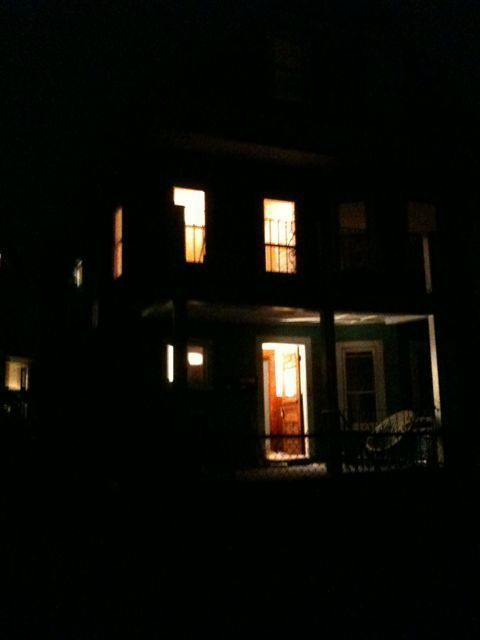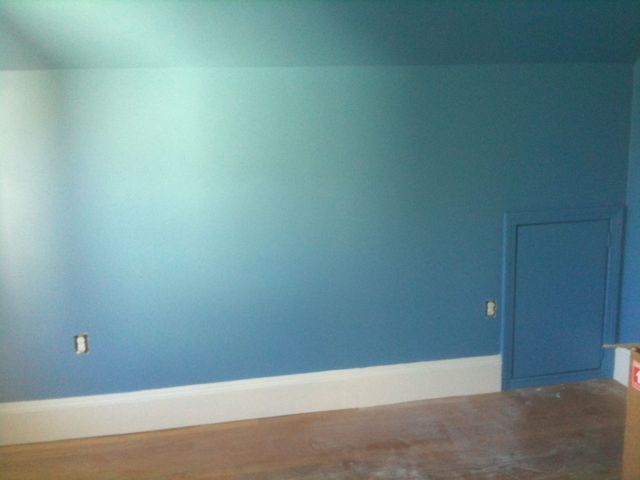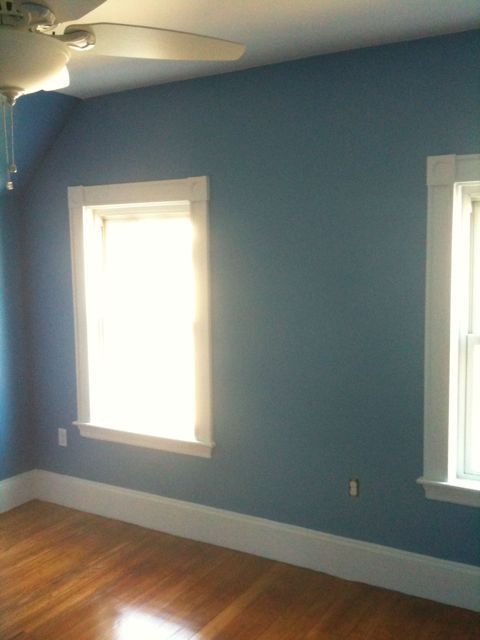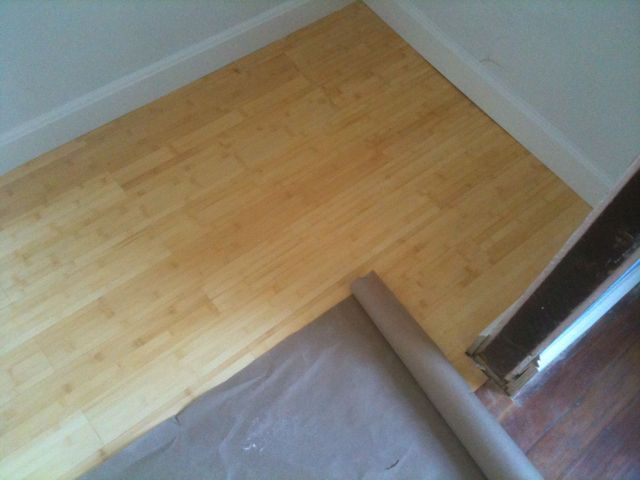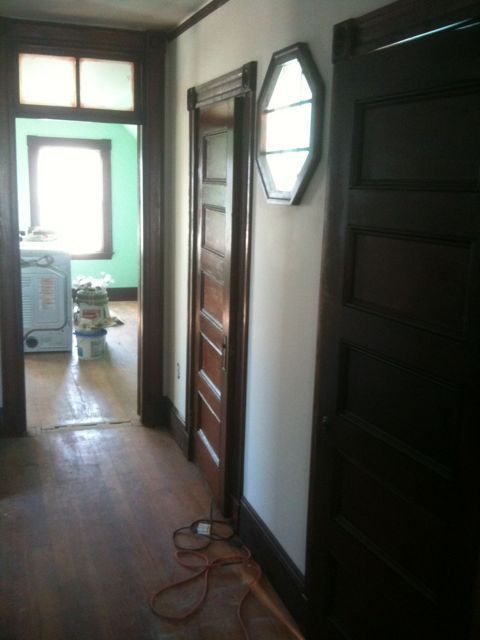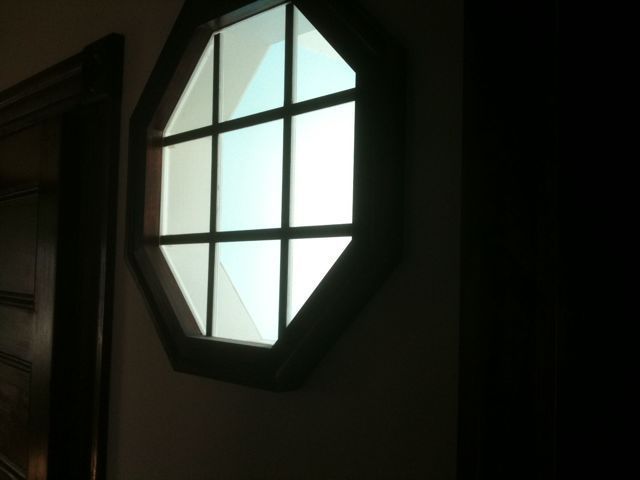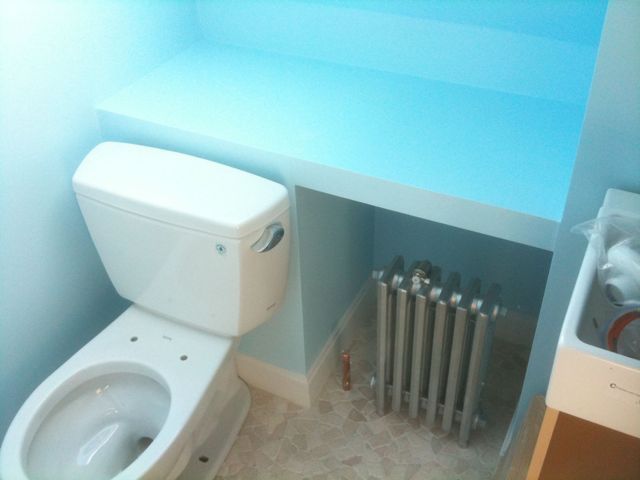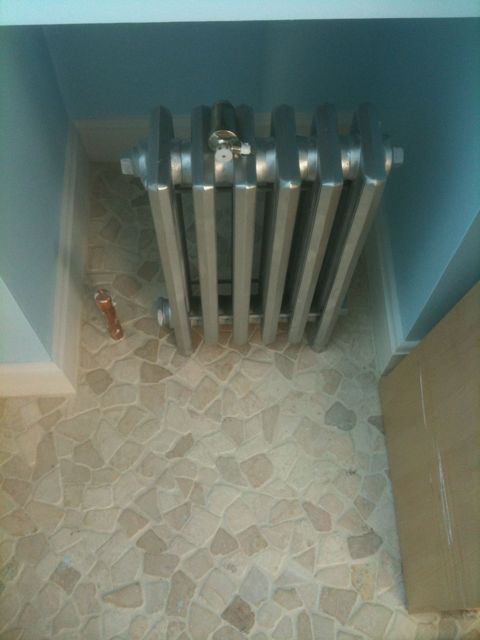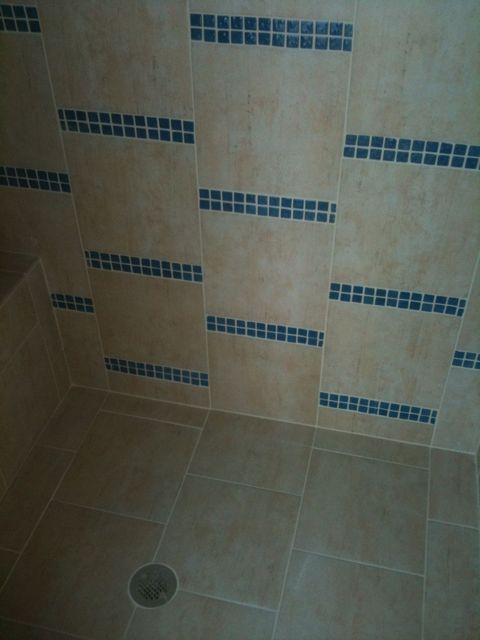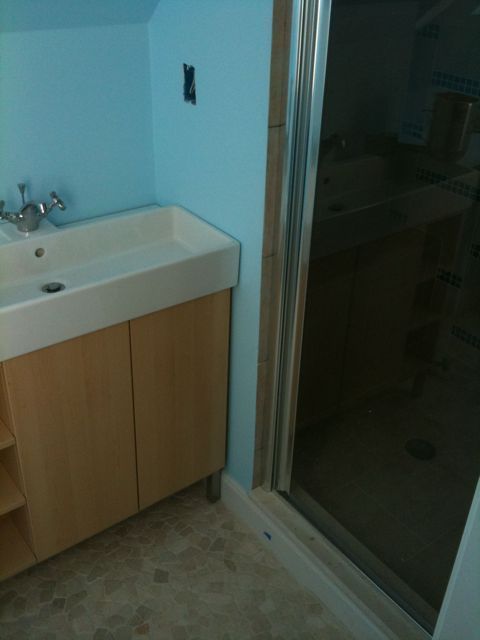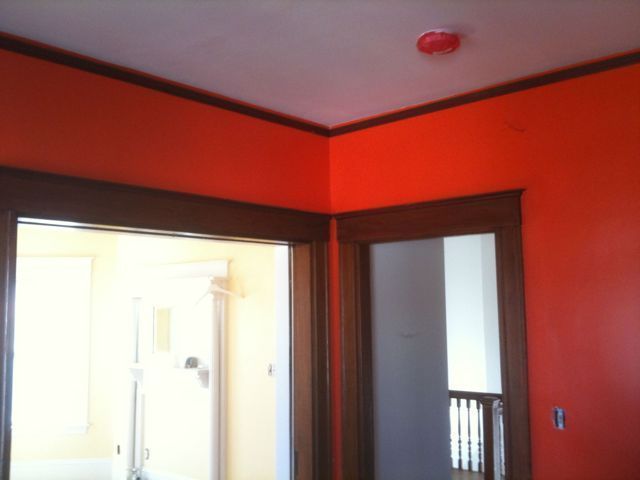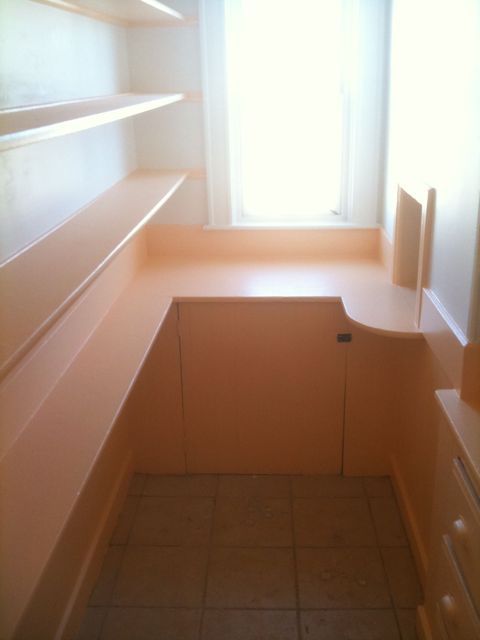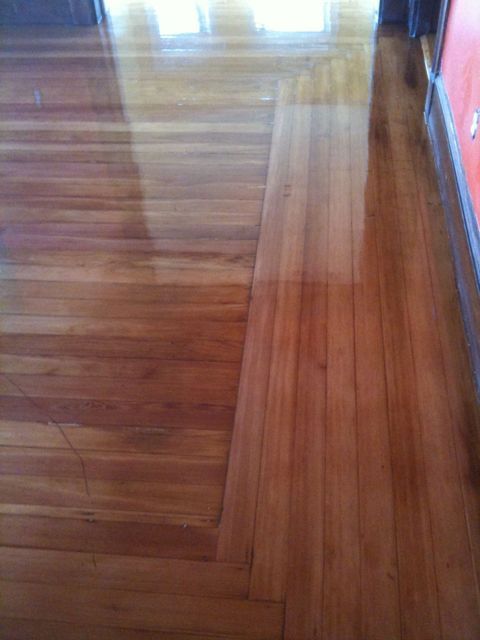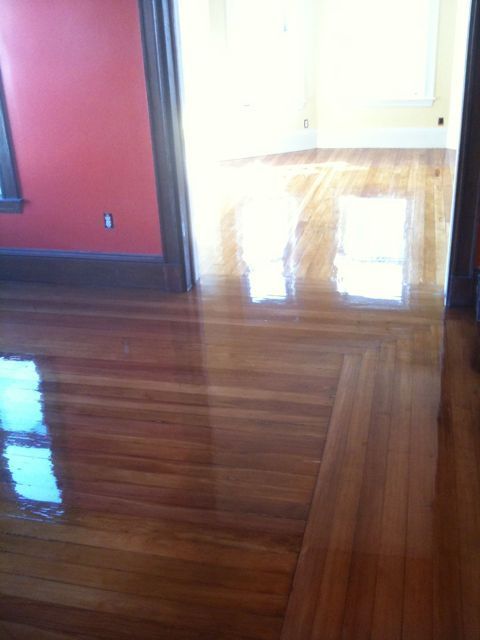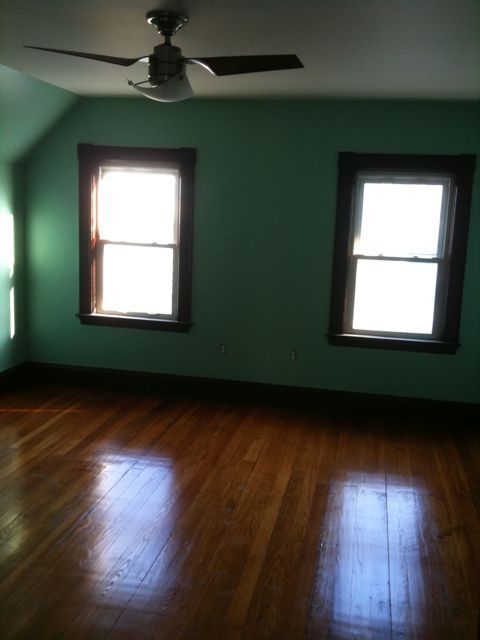Here’s your first tip: Surfactant Leaching is not your friend!
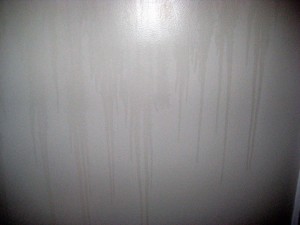
About a week after my interior walls were painted, I showed up at the house to find these brown streaks dripping down every wall! Turns out that a few days after the walls had been painted, we had some crazy-ass weather. The house was closed up pretty tightly, although the basement was very damp (and I had holes in my floor so my apartment was exposed to the basement pretty directly). Overnight, the temperature fell down into the low 40’s, and the house cooled considerably. Suddenly, during the day on Saturday, warm moist air flooded in from the south. Here’s the weather graph recorded on Winter Hill in Somerville:

That’s a 25 degree (F) rise in temperature from the overnight low, and a rise of 12 degrees in just over one hour! With a cold, damp house, and a sudden rise in temperature and dew point, you have a recipe for condensation.
And, apparently, latex paint can take up to a month to fully “cure.” Until that time, when moisture collects on the surface of the paint, the surfactants in the paint (agents that aid in mixing) can be drawn to the surface. These surfactants and other water-soluble components of the paint collect in droplets, which then either drip down the wall (as in the photo above) or collect on the underside of horizontal surfaces, like this doorway header in my place:
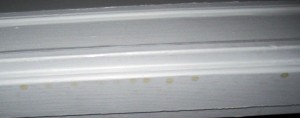
We were able to wash some of this off, but the residue remains on many of the walls.
Of course, now that we’re down to “punch list” time, it turns out that more than 50% of the walls need to be repainted anyway! (Yes, the painters have done a pretty slipshod job of it.)
This all happened back in mid-October, but it’s only now that I’ve been able to bring myself to blog about it.
And, no – even though it’s November 24th, and our project began on July 29th, and we were quoted a six week project time frame – we’re still not finished.

